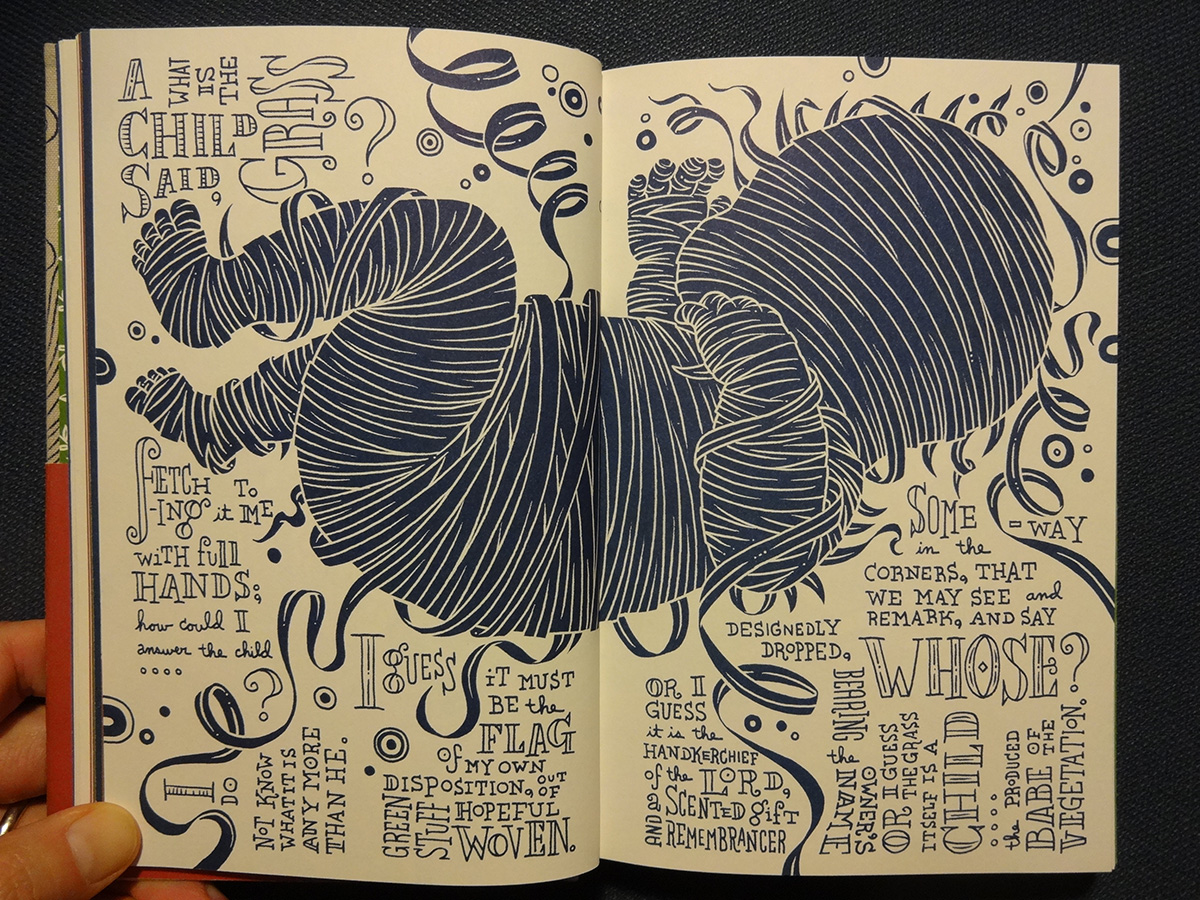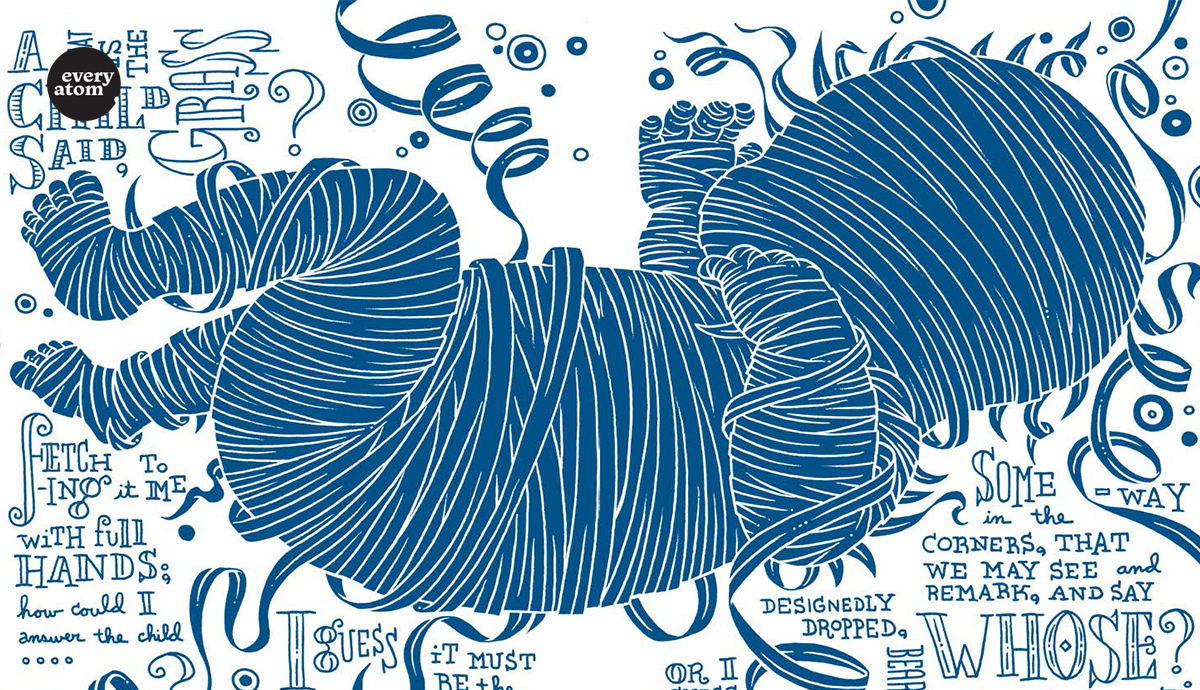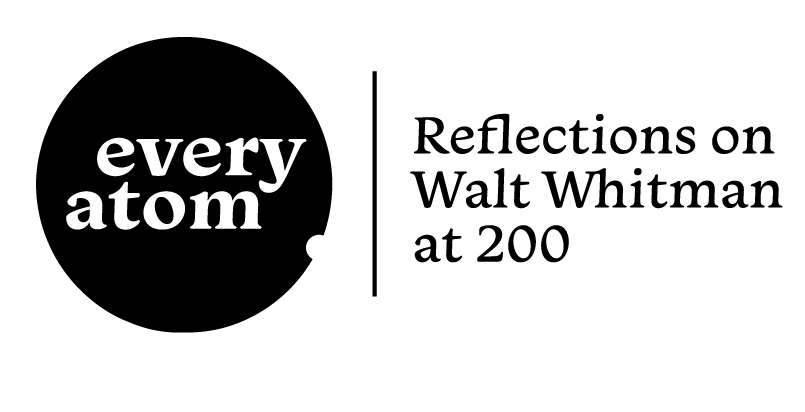Introduction to Every Atom by project curator Brian Clements

I spent a year in my basement illustrating and writing out the entire text of the original 1855 edition of “Song of Myself.” During that year, there were many times when I was frustrated by Whitman’s penchant for abstractions, which hindered my attempts at visually interpreting his passages.
I confess that my own sensibilities are more in line with the likes of William Carlos Williams, who was given to intimate meditations on incidental things around him, rather than striding the boards grandly and cataloging people and things from a distance, as Whitman often does. This either makes me the worst possible person to interpret Whitman’s poetry or the best: I can’t say.
I’m not a Whitman scholar, but it appears that he was actively avoiding metaphor, possibly viewing it as a fusty stylistic crutch common in traditional poetry. To be fair, examples of overly-elaborate metaphors in the poetry prior to Whitman’s time are legion, and they are indeed bloviating, grandiose affairs that are easy—and enjoyable—to mock.
To Whitman, who was obviously keen to break with the old, metaphor must have been one of the key features of the kind of poetry he was trying to distance himself from. While I find his desire to charge into new territory admirable, I do think his poetics probably would have benefitted from including a smattering of close, vivid imagery. But then, his mission was to make a definitive break with previous forms. And for all I know, such moderation may have diminished his lasting influence on American poetry.
The main organizing unit of my illustrated version of “Song of Myself” is the two-page spread. Each spread contains a single theme. Once Whitman’s gaze goes elsewhere, a new page spread begins.
The “babe of the vegetation” passage that appears early in “Song of Myself” is one of the precious few spots in the poem where Whitman resorts to metaphor. I often wonder if it may have eluded his eye. When the time came to interpret that passage, I seized upon it with relish, filling the two-page spread with a giant infant comprised of spun grass. It remains one of my favorite spreads in the book: it’s the one baby that wasn’t thrown out with the bathwater.




